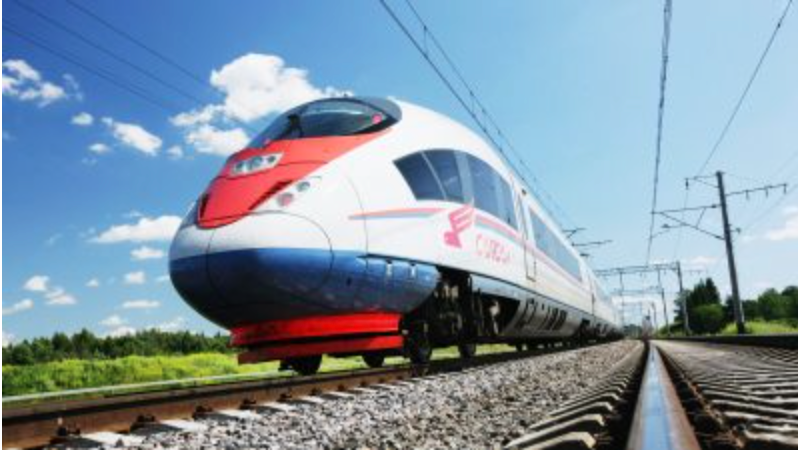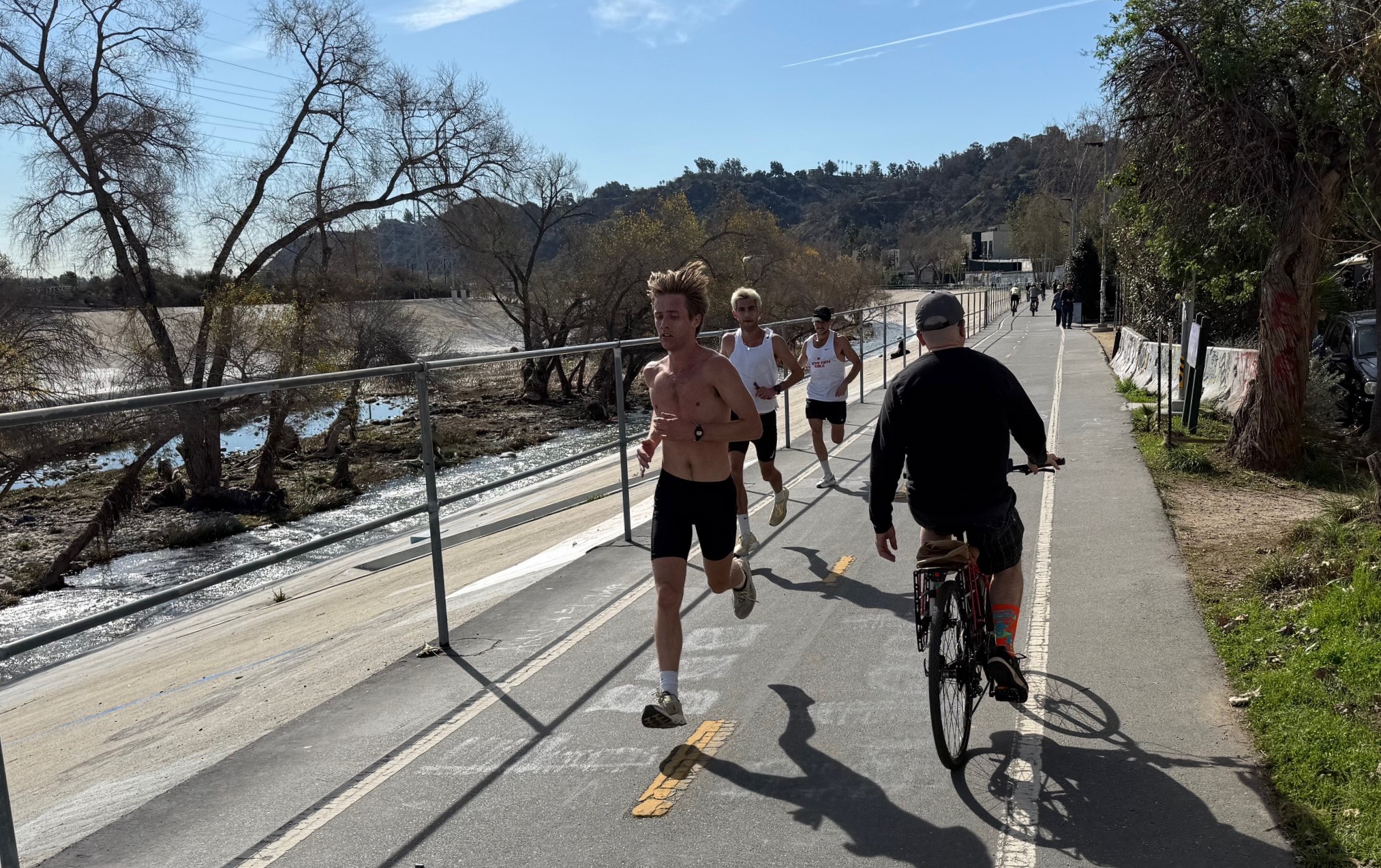The Democrats' controversial decision to axe funding for high speed rail from their blockbuster climate bill has some advocates wondering what it will take for lawmakers to finally understand the environmentally transformative potential of the mode — both for decarbonizing long distance travel and the larger movement to end car dependence more broadly.
Sustainable transportation advocates were outraged last week when news broke that the Senate's $700-billion Inflation Reduction Act would contain zero guaranteed money for shared transportation while pouring billions into consumer subsidies for electric cars.
Transit projects are only eligible for a tiny handful of competitive programs — the $3.4 billion Neighborhood Equity and Access Grant program and a roughly $1-billion grant program to green commercial vehicles like buses, school transportation vehicles and garbage trucks — but agencies will be forced to compete for their share with projects that primarily benefit pedestrians, cyclists, and other sustainable modes. As a result, some are already beginning to question Democrats' estimates that the package would decrease greenhouse gas emissions by 40 percent below 2005 levels.
“It is a bitter pill in terms of rail and transit, which is the one clearly established, low-carbon emission transportation systems we have going,” Sean Jeans-Gail, vice president of government affairs and policy at the Rail Passengers Association, told Politico. “It does feel like this is going to lock in highway dominance.”
High-speed rail network in China. Blue is completed, red is under construction, and orange is project approved.
— A.C. Carpenter (@_AC_Carpenter_) July 29, 2022
Eisenhower built the highways with war money. Democrats today are to the right of 1950s Republicans. Absolutely fucking pathetic. pic.twitter.com/uiquUq2uB8
One of the lesser-discussed omissions from the bill, though, was a new program to finally kick-start a high speed rail network in the U.S., which had been slated to receive $10 billion under the earlier Build Back Better Act. (Lower-speed transit was also promised as much as $9.9 billion at various points in the negotiation over Build Back Better, an amount which was widely seen as a corrective for the funds agencies lost during severe cuts to the original bipartisan infrastructure law.)
Despite more than half a century of legislative attempts dating back to the High Speed Ground Transportation Act of 1965, the Senate has struggled to deliver federal investment in bullet trains — even as other countries around the world have built nearly 35,000 miles of service. Currently just 33.9 miles of the US passenger rail network is functionally capable of supporting train speeds more than 150 miles per hour; Morocco, by contrast, has just 7 percent of America's land mass but three times as much high-speed service, and China has nearly 24,000 miles of fast tracks.
"Frankly, I don’t think the Senate understands high speed rail yet," said Rick Harnish, executive director of the High Speed Rail Alliance. "We’ve got a lot more work to do, especially to get local leaders telling their Senators that their communities need high speed rail. We just have too low of expectations of what train service can be in this country."
I guarantee that when the first truly high speed rail line opens in the United States, (Whenever and whatever that is... 👀@BrightlineWest/@TexasCentral???) people are going to like the experience and wonder why we didn't invest in it over half a century ago.
— Jerome Alexander Horne (@jahorne) August 2, 2022
One of the biggest misconceptions about high speed rail, Harnish emphasizes, is that it benefits only the tiny handful of big-city travelers who might be persuaded to trade a plane for a train along a specific, limited route, rather than a catalyst for a far more wide-reaching transportation revolution in communities of all sizes.
That's because airports, Harnish explains, consume "a ridiculous amount of land for very small volume vehicles" that typically only deliver a couple hundred passengers per trip, often at staggering costs to the consumer, taxpayers at large, and of course, the environment. Building high speed train stations, though, opens up vast tracts of developable acreage that can be more meaningfully integrated with local transit, walking and biking networks, while delivering as many as 1,323 passengers in a single trip at far more frequent intervals than many airlines — and taking them straight into the heart of cities, rather than far-flung terminals on the edge of the exurbs of town.
"You’re bringing a lot of people into your community without a car, which means, among other things, you don’t have to spend a ton of money on storing their car," Harnish said. "It can be the mental game changer that gets people thinking differently about how they get around."
I think @RepPeterDeFazio should slip in his high speed rail/TOD/carbon reduction bill and send it back amended with lessened EV incentives to throw Manchin off the scent lol
— local mule (@Anti_id0L) July 28, 2022
Harnish acknowledges that the $10 billion that was cut from the new Senate deal certainly wouldn't have been enough to give America the high speed rail network it deserves; a long-sought project between San Francisco to Los Angeles alone clocked in at least $76 billion according to recent estimates, and even more modest projects could easily consume the whole pot.
But that simply means we must increase funding to all forms of rail, including slower trains to smaller cities — which Harnish points out also got left out of the deal.
"I’m getting really annoyed at people who complain that California’s line is taking too long, and then not funding it, or any other projects," Harnish said. "We need a national movement for fast, frequent, and affordable rail...Not only would it really reduce driving, but it would be a catalyst for changing our communities, so you don’t have to drive for short trips, either."







